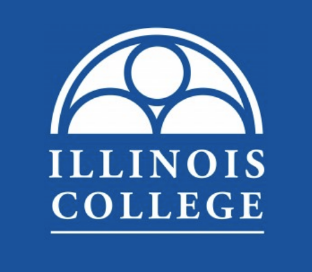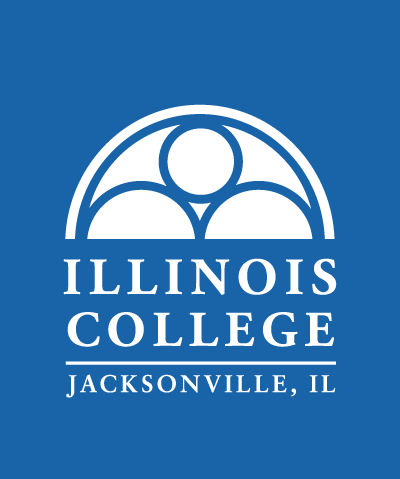SAFE IC Process & Policies
While interacting with College community members, a person may be confronted with situations in which a faculty member, staff member, or student displays concerning behaviors or comments, is disruptive to the campus environment, or creates an environment that may be intimidating or threatening to others. By providing information and assistance, SAFE IC is designed to assist in responding to these behaviors.
The SAFE IC Plan was developed in accordance with the State of Illinois Campus Security Task Force Report to the Governor and the Illinois Campus Security Enhancement Act. Overall, the SAFE IC Plan seeks to formalize the College’s processes for greater communication, collaboration, and coordination in responding to concerns regarding campus community member behavior.
SAFE IC Team
The SAFE IC Team is a multidisciplinary team that meets regularly to serve six major functions for the College:
- Provide staff training to recognize concerning, disruptive and/or threatening behavior
- Provide consultation and support to the campus community in assisting faculty, staff or students who display concerning or disruptive behaviors
- Gather information to assess situations involving faculty, staff or students who display concerning or disruptive behaviors including implementation a formal SAFE IC process
- Recommend appropriate intervention strategies or disciplinary sanctions
- Connect faculty, staff or students with needed campus and community resources
- Monitor ongoing behavior of faculty, staff or students who have displayed disruptive or concerning behavior
A referral agency is available for further mental health consultation if warranted. Additional members from the campus community are included in meetings of SAFE IC as necessary.
Reporting Process
The overall goal of the SAFE IC Plan is to promote a safe college environment. By encouraging all members of the campus community to report behaviors that are concerning, SAFE IC will be able to reach out to the faculty member, staff member, or student to intervene, provide support, and connect them with resources that can assist. As such, SAFE IC asks that the campus community report concerning “red flag” behaviors.
Identifying “Red Flag” Behaviors - Recognizing that it is not uncommon for people to display some questionable or inappropriate behaviors, “red flag” behaviors are those questionable, suspicious or inappropriate behaviors that go beyond what seems normal or reasonable for the situation. “Red flag” behaviors may be presented through a person’s appearance, spoken or written words, or specific actions.
Examples of “red flag” behaviors include:
- Behaviors which regularly interfere with classroom environment or management
- Notable change in behavior or appearance
- Impairment of thoughts – verbal or written
- Overly aggressive behaviors toward others
- Inappropriate or strange behavior
- Overreaction to circumstances
- Writings and comments endorsing violence; unusual interest in violence
- Indirect or direct threats in writings or verbalizations
- Anger management problems
- Threats to others
- Expression of suicidal thoughts or feelings of hopelessness
SAFE IC Referral
The SAFE IC Referral is designed to enable anyone to voluntarily report “red flag” behaviors that may raise concerns. An incident, in this context, is an event that does not warrant immediate intervention. In the event of an emergency that requires immediate intervention, call 911 or the Department of Public Safety at 217.245.3111.
The SAFE IC Referral will provide a mechanism for responding to individual incidents and will reveal patterns of disruptive behavior of a faculty member, staff member or student. It will provide aggregate data on the nature and frequency of disruptions at Illinois College. This referral provides a standardized method for reporting observations of troublesome behaviors and for alerting appropriate personnel of potential concerns.
SAFE IC Assessment
While there is no single set of warning signs that will reliably predict a person’s behavior or campus violence, the assessment process looks for behavioral evidence that a faculty member, staff member, or student is planning or preparing to act out inappropriately or carry out some type of threat. An assessment is designed to distinguish between threatening and non-threatening behavior in order to ensure the safety of the person of concern and any others potentially involved. Interventions put into place by the SAFE IC team will also work to resolve concerns that initiated the inappropriate behavior.
Assessments assist in early identification of situations that may pose a threat to self or others, creates a baseline of information against which to assess future behavior, and provides a means for implementing interventions to increase the likelihood of a positive and safe resolution.
Assessment Process
Information Gathering and Assessment - Once a SAFE IC Referral has been received, an initial assessment will be made by the SAFE IC team. The SAFE IC Case Manager will then implement the appropriate intervention process into place based on this initial assessment.
If the appropriate intervention necessitates a meeting with the person of concern, the SAFE IC Case Manager will conduct an intake interview and create an improvement plan. Information gleaned in this initial interview will be helpful in determining appropriate intervention strategies.
In addition to an intake interview, the following processes may be utilized to gain further information:
- Interviews with all available parties with information about the situation
- Assessment by counselor/mental health professional
- Interview with any identified potential targets of inappropriate/concerning behavior
- Contacting family members (if applicable)
- Legal/criminal background check
Intervention Strategies
In most cases, an individual displaying concerning behavior is willing to work with the College and to obtain the assistance necessary. When a person is in distress, feeling they have support for resolving the concern may serve as prevention.
Based on the behavior displayed by the person of concern and the assessment by SAFE IC, the SAFE IC team may make any of the following recommendations for intervention. Recommendations are made in consultation with the appropriate College department or administrator who takes any final action.
- Referral to College and/or Community Resources
- Mandatory Direct Threat/Safety Assessment
- Referral to Disciplinary Process
- Voluntary/Involuntary Withdrawal from the College
- Voluntary/Involuntary Psychiatric Hospitalization
- Suspension or Mandatory Leave of Absence
- Criminal Charges
- Issues of a “No Contact Order” to parties or request of an Order of Protection from the Jacksonville Police Department
- Require counseling sessions
- Require successful completion of behavioral contract
- Recommend issuance of a no trespass
- Recommend a fitness for duty evaluation
- Require adherence to health or medical directions
Follow-Up and Monitoring
In addition to any of the specific intervention strategies described previously, the SAFE IC Team will determine a plan for follow-up monitoring of each person of concern. These intervention strategies may include: checking in with other members of the campus community regarding the individual’s behavior; checking the progress of any counseling the person of concern participates in; and periodic 1-on-1 meetings with an assigned SAFE IC member. Failure of the person of concern to cooperate with this follow-up monitoring could result in disciplinary action.
Feedback to Referring Individual
As permitted by law and following assessment and intervention with the identified person of concern, the SAFE IC Case Manager may provide feedback to the referring individual to inform them of resolution of the case and any ongoing follow-up in which they may need to be involved.
Record Keeping
SAFE IC Team records will be stored on a secured platform. Records will be maintained for seven years post enrollment at the college for students and seven years past the last point of contact with SAFE IC for faculty and staff.


